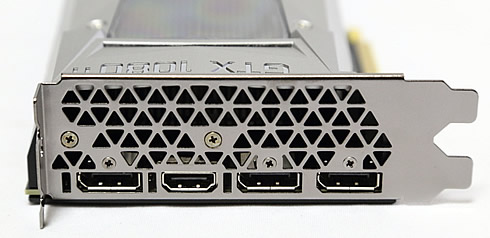Review: NVIDIA Geforce GTX 1080Ti
1. Meet the Nvidia GeForce GTX 1080Ti GPU
Review Pages
When NVIDIA launched the GeForce GTX 1080 back in May they set a new high bar for GPU performance. We're now in 2017 and NVIDIA unveiled last week at GDC the GeForce GTX 1080 Ti. Based on NVIDIA's GP102 GPU - Pascal - the GTX 1080 Ti is taking advantage of improved manufacturing yields and reduced costs to offer more power.
With the GTX 1080 Ti, NVIDIA says it is offering around 35% higher performance compared to the GTX 1080.
GTX 1080 Ti ships with 28 of GP102's 30 SMs enabled. Compared to the NVIDIA Titan X, which is also based on the same Pascal GPU, the GTX 1080 Ti has 88 out of the available 96 ROPs enabled.
In terms of clockspeeds the GTX 1080 Ti ships with a 1.48GHz base clock and a 1.58GHz boost clock. This is a bit lower than the clocks the GTX 1080 shipped at 1.6GHz and 1.73GHz respectively.
On the memory front, the GTX 1080 Ti is the first card NVIDIA is equipping with partner Micron's second-generation GDDR5X memory. This allows for higher clockspeeds, allowing NVIDIA to ship the GTX 1080 Ti with an 11Gbps memory clock, a 10% increase over the 10Gbps clock found on the Titan and the GTX 1080. This memory is situated on a 352-bit memory bus, which works out to 11GB of memory with a total bandwidth of 484GB/sec for the GTX 1080 Ti.
The GTX 1080 Ti offers just over 11.3 TFLOPS of FP32 performance. This puts the expected shader/texture performance of the card 28% ahead of the current GTX 1080, while the ROP throughput advantage stands 26%, and memory bandwidth at 51.2%.
The card's TDP is 250W.
| GeForce GTX 1080 Ti | TITAN X | GeForce GTX 1080 | |
|---|---|---|---|
| Architecture | Pascal | ||
| GPU | GP 102 | GP 104 | |
| Manufacturing process | 16 nm FinFET | ||
| CUDA cores | 3,584 | 3,584 | 2,560 |
| Texture units | 224 | 224 | 160 |
| ROPs | 88 | 96 | 64 |
| GPU clock | 1,480 MHz | 1,417 MHz | 1,607 MHz |
| Max GPU ckloc | 1,582 MHz | 1,531 MHz | 1,733 MHz |
| Memory | 11GB GDDR 5X | 12GB GDDR 5X | 8GB GDDR 5X |
| Memory clock | 11 Gbps | 10 Gbps | 10 Gbps |
| Memory interface | 352-bit | 384-bit | 256-bit |
| Memory bandwidth | 484 GB / s | 480 GB / s | 320 GB / s |
| TDP | 250 W | 250 W | 180 W |
| Price | $ 699 | $ 1,200 | $ 499 |
Besides the Founder's Edition, NVIDIA's partners will offer a mix of reference and custom designs by next month. The $699 MSRP of the card will be the MSRP for both the Founder's Edition and partners' custom cards. The GTX 1080 has in turn received a price cut, with the base cards going down to $499, and the Founder's Edition going down to $549.
For now, the GTX 1080 Ti is facing no competition, until AMD releases its RX Vega video cards sometime in the next quarter.
The GTX 1080 Ti Founder's Edition is a 10.5-inch type card comprised of a cast aluminum housing and held together using a combination of rivets and screws. NVIDIA is lining the entire card with an aluminum baseplate, which provides heatsinking capabilities for the VRMs and other components below it, along with providing additional protection for the board. Like past NVIDIA 250W cards, the GTX 1080 FE uses NVIDIA's vapor chamber cooler in order to maximize the heat transfer between the GPU/VRMs/DRAM and the aluminum heatsink above.

For the GTX 1080 Ti, NVIDIA has removed the DVI port that in past designs took up part of the second slot used for ventilation.
Towards the top of the card we find the requisite SLI and power connectors. Like NVIDIA's 250W cards before it, the GTX 1080 Ti features a 6 pin + 8 pin setup.

NVIDIA's display I/O configuration includes 3x DisplayPort 1.4 and 1x HDMI 2.0b. NVIDIA is also including a DisplayPort-to-SL-DVI adapter with the Founder's Edition card.

We tested the Nvidia GTX 1080Ti using the following PC setup:
| CPU | Intel Core i 7 - 7700 K |
| Motherboard | ASUS ROG STRIX Z270 F GAMING |
| Memory | DDR 4 - 2400 8GB x 2 (2 ch / 17 - 17 - 17 - 39 / 1.2 V) |
| Storage | 256GB SSD |
| Graphics driver | GeForce GAME READY DRIVER 378.78 |
| OS | Windows 10 Pro 64bit |
Review Pages





















